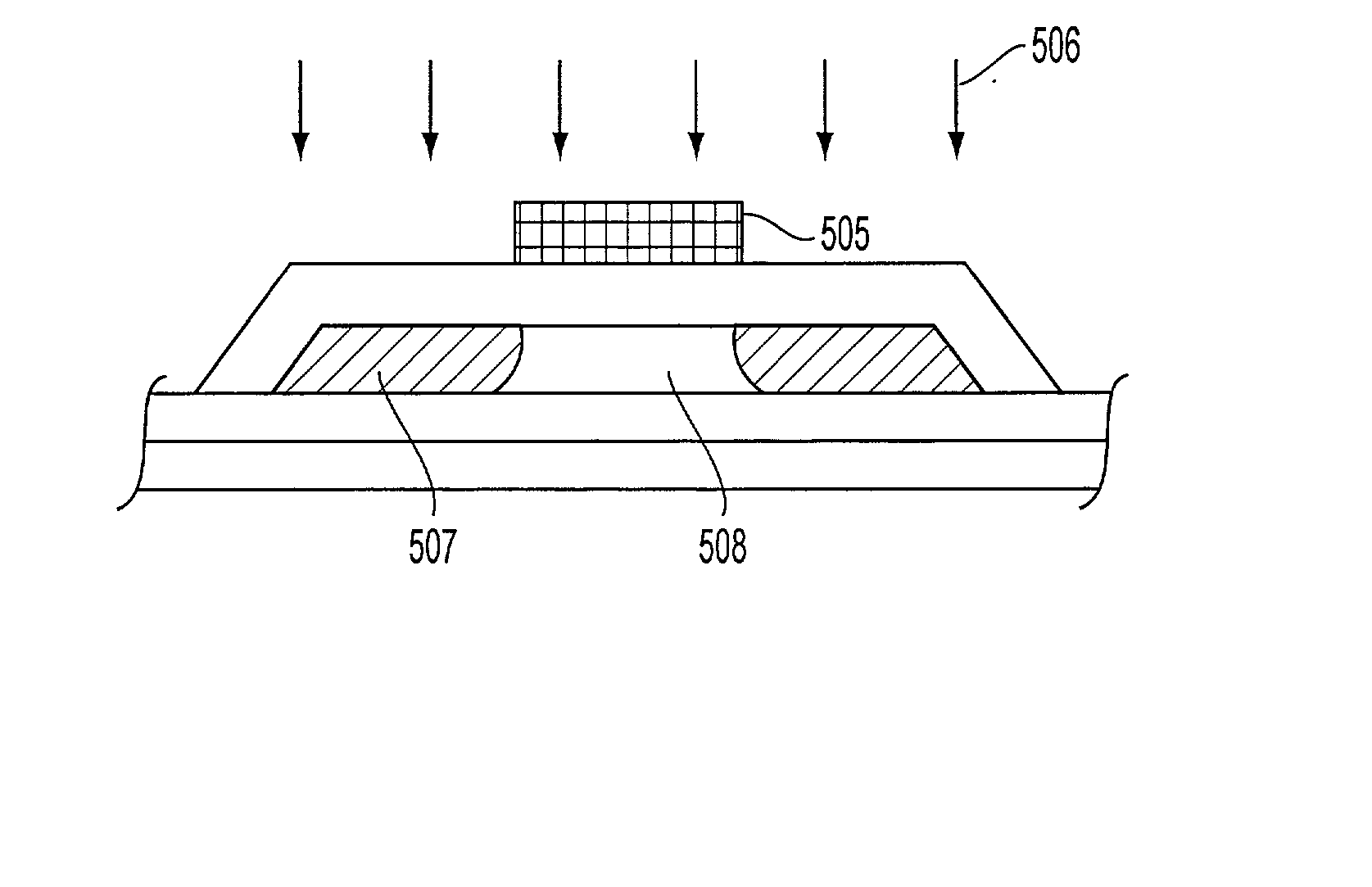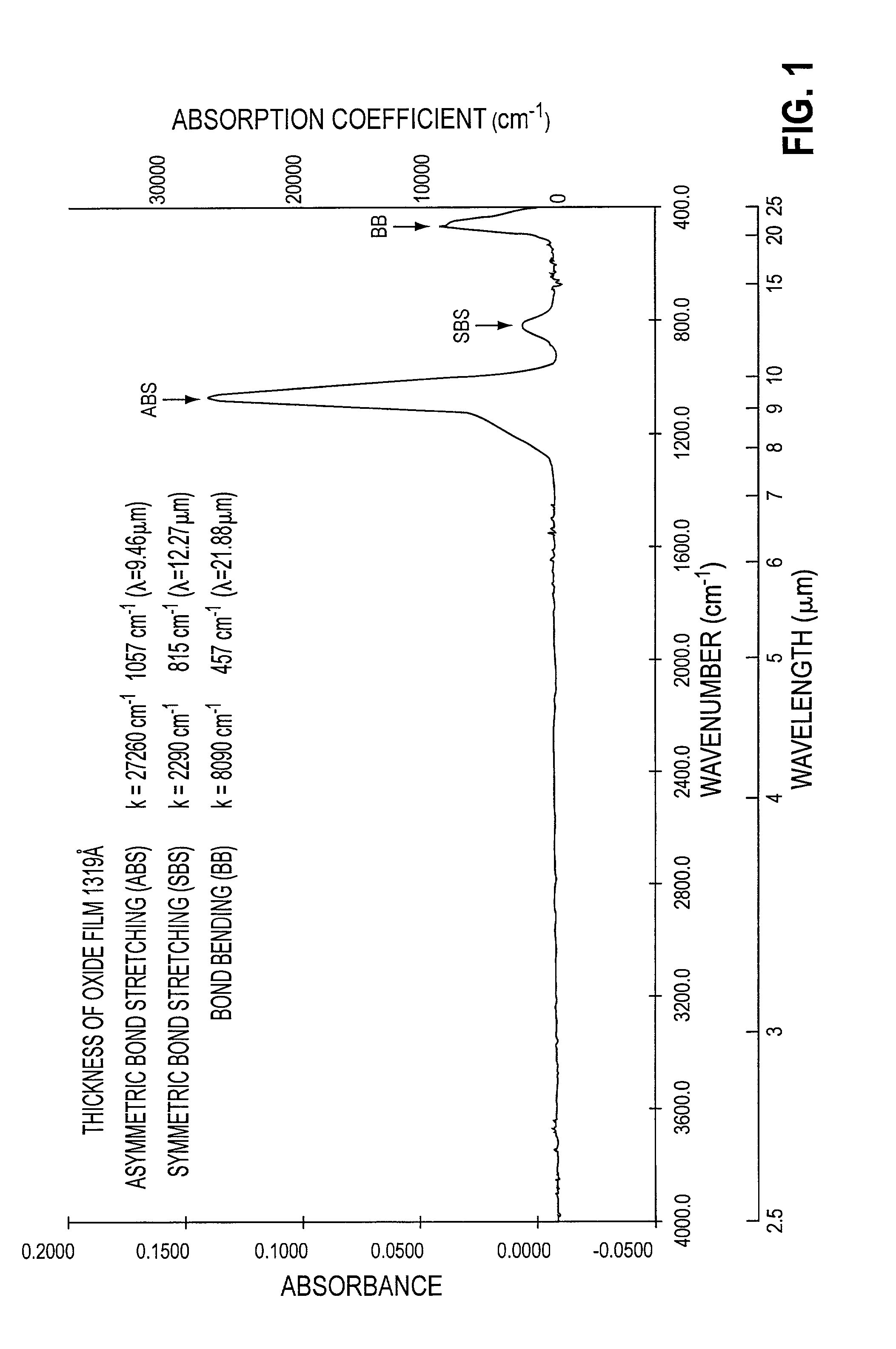Method for manufacturing silicon oxide film, method for manufacturing semiconductor device, semiconductor device, display device and infrared light irradiating device
a manufacturing method and technology of silicon oxide film, applied in the direction of vacuum evaporation coating, chemical vapor deposition coating, coating, etc., can solve the problems of low quality and reliability of p-si tft, low film quality, and many problems of conventional semiconductor devices such as p-si
- Summary
- Abstract
- Description
- Claims
- Application Information
AI Technical Summary
Benefits of technology
Problems solved by technology
Method used
Image
Examples
first embodiment
[0070] First Embodiment
[0071] FIG. 4 is a figure showing the oxide film temperature changes by infrared light irradiation. As infrared light, a carbon dioxide laser beam was used and this infrared light was irradiated onto a silicon oxide film constituting a gate insulating film; temperature changes over the silicon oxide film were estimated by an electronic computer. The vertical line indicates the temperature of the silicon oxide film surface, and the horizontal line indicates the time right after irradiation has started. As a substrate, popular non-alkali glass is assumed. On a substrate, a silicon oxide film is deposited as an underlying layer-protecting film at the thickness of 200 nm by an ECR-PECVD method, and a polycrystalline silicon film with a thickness of 50 nm thereon and, moreover, a silicon oxide film as a gate insulating film with a thickness of 100 nm thereon are deposited by the ECR-PECVD method. The optical characteristics of the gate insulating film and the under...
second embodiment
[0075] Second Embodiment
[0076] FIGS. 5(a)-(d) are figures showing, in cross section, the manufacturing process of a thin film semiconductor device for fabricating MOS field-effect transistors. In the Second Embodiment, a popular non-alkali glass having a strain point of about 650.degree. C. is used as a substrate 501.
[0077] First, a first silicon oxide film is deposited at about 200 nm by a ECR-PECVD method on the substrate 501, thus preparing an underlying layer-protecting film 502. The deposition conditions of the first silicon oxide film by the ECR-PECVD method are as follows:
[0078] Monosilane (SiH.sub.4) flow rate: 60 sccm;
[0079] Oxygen (O.sub.2) flow rate: 100 sccm;
[0080] Pressure: 2.40 m Torr;
[0081] Microwave (2.45 GHz) power: 2,250W;
[0082] Applied magnetic field: 875 Gauss;
[0083] Substrate temperature: 100.degree. C.; and
[0084] Film-forming time: 40 seconds.
[0085] On this underlying layer-protecting film, an intrinsic amorphous silicon film is deposited at the film thickness ...
third embodiment
[0115] Third Embodiment
[0116] Using the NMOS thin film semiconductor device obtained in the Second Embodiment as a switching element for picture elements of a color LCD having 200 (row).times.320(column).times.3(color)=192,000 (picture elements), an active matrix substrate was manufactured wherein a 6-bit digital data driver (column side driver) and a scanning driver (row side driver) were built-in the CMOS thin film semiconductor device obtained in the Second Embodiment.
[0117] FIG. 6 is a circuit diagram of the 6-bit digital data driver. The digital data driver of the Third Embodiment includes a clock signal line and a clock generating circuit, a shift resistor circuit, a NOR gate, a digital image signal line, a latch circuit 1, a latch pulse line, a latch circuit 2, a reset line 1, an AND gate, a reference potential line, a reset line 2, a 6-bit D / A converter by capacitance split, a CMOS analog switch, a common potential line and a source line reset-transistor. The output from the...
PUM
| Property | Measurement | Unit |
|---|---|---|
| thickness | aaaaa | aaaaa |
| wavelength | aaaaa | aaaaa |
| wavelength | aaaaa | aaaaa |
Abstract
Description
Claims
Application Information
 Login to View More
Login to View More - R&D
- Intellectual Property
- Life Sciences
- Materials
- Tech Scout
- Unparalleled Data Quality
- Higher Quality Content
- 60% Fewer Hallucinations
Browse by: Latest US Patents, China's latest patents, Technical Efficacy Thesaurus, Application Domain, Technology Topic, Popular Technical Reports.
© 2025 PatSnap. All rights reserved.Legal|Privacy policy|Modern Slavery Act Transparency Statement|Sitemap|About US| Contact US: help@patsnap.com



